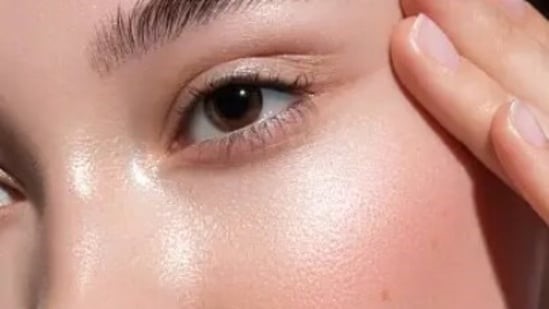HAEMOGLOBIN FOUND IN EPIDERMIS

Disclaimer: Copyright infringement not intended.
Context
- Researchers have discovered that haemoglobin, a protein found in red blood cells that binds oxygen, is also present in the epidermis, our skin's outermost bodily tissue.
Details
Epidermis Overview
Location and Structure:
- The epidermis is the outer layer of the skin, positioned above the dermis.
- It is primarily composed of stratified layers of cells called keratinocytes.
- These cells undergo a process called keratinization, producing the tough protein keratin that contributes to the skin's strength and waterproofing.
Layers of the Epidermis:
- The epidermis consists of several distinct layers, including:
- Stratum Corneum: The outermost layer, composed of dead, flattened keratinocytes that form a protective barrier against the external environment.
- Stratum Lucidum: Present in thick skin areas (such as palms and soles), consisting of clear, flattened cells.
- Stratum Granulosum: Cells here begin to lose their nuclei and produce keratin.
- Stratum Spinosum: Comprised of several layers of living keratinocytes.
- Stratum Basale (Basal Layer): The deepest layer where new cells (keratinocytes) are formed through cell division. Melanocytes, responsible for skin pigmentation, are also found here.
Functions of the Epidermis:
- Barrier Function: It acts as a barrier against pathogens, UV radiation, chemicals, and dehydration.
- Protection: Prevents loss of bodily fluids and protects against mechanical damage.
- Sensory Perception: Contains nerve endings for detecting touch, pressure, temperature, and pain.
- Regeneration: Constantly renews itself through a process called epidermal turnover, where older cells shed and new cells move upward to replace them.
Cell Types and Specialized Cells:
- Keratinocytes: Predominant cells that produce keratin, contributing to skin strength.
- Melanocytes: Cells that produce melanin, the pigment responsible for skin color and UV protection.
- Langerhans Cells: Immune cells that help in recognizing and alerting the immune system to potential threats.
- Merkel Cells: Responsible for tactile sensation and found in touch-sensitive areas.
Role in Skin Health and Disorders:
- Various skin conditions and diseases, such as eczema, psoriasis, and skin cancer, can affect the epidermis.
- Disorders may arise due to issues in cell proliferation, differentiation, or barrier function.
Regulation and Maintenance:
- The epidermis is influenced by various factors, including hormonal changes, nutrition, environmental exposure, and genetics.
- Proper skincare, hydration, and protection against UV rays are essential for maintaining healthy epidermal function.
Study Findings
- Presence of Haemoglobin: Haemoglobin, a protein primarily found in red blood cells, was unexpectedly discovered in the epidermis, specifically in keratinocytes and hair follicles.
- Objective: The study aimed to understand how the epidermis protects the body and aimed to identify unexpected substances expressed within this protective skin layer.
- Significance of Discovery: The presence of haemoglobin in epidermal cells adds a new dimension to comprehending the skin's defense mechanisms.
- Protective Role: Haemoglobin, known for its ability to bind gases like oxygen and carbon dioxide, as well as being an iron carrier, is suggested to potentially exhibit antioxidant activity and contribute to maintaining the skin barrier.
Research Methods and Analysis
- Transcriptome Analysis: Researchers conducted a comparative transcriptome analysis of both the entire epidermis and its upper layers, revealing heightened activity of genes responsible for producing haemoglobin in the upper epidermis.
- Response to Oxidative Stress: The study found that epidermal haemoglobin increased in response to oxidative stress. It was observed to inhibit the production of reactive oxygen species in human keratinocyte cell cultures.
Implications
- Protective Mechanisms: Haemoglobin expression by keratinocytes appears to serve as an inherent defense mechanism against skin aging and possibly skin cancer. It seems to protect against oxidative stress from external sources like UV rays and internal factors such as impaired mitochondrial function.
- Skin Health Implications: The findings offer insights into potential strategies for skincare and health interventions that leverage the protective properties of epidermal haemoglobin.
Conclusion
The study's discovery of haemoglobin in the epidermis unveils its potential role in skin protection, highlighting its significance in understanding skin defense mechanisms and suggesting avenues for future research in skincare and health treatments.
|
PRACTICE QUESTION Q. Discuss the pivotal role played by the epidermis in maintaining skin integrity and elucidate its significance in protecting the body from external factors. (250 Words) |





1.png)
